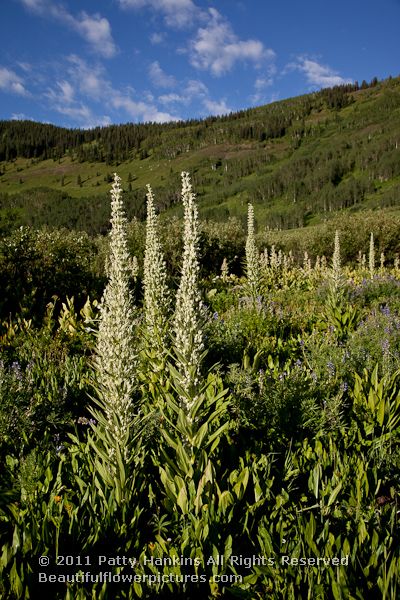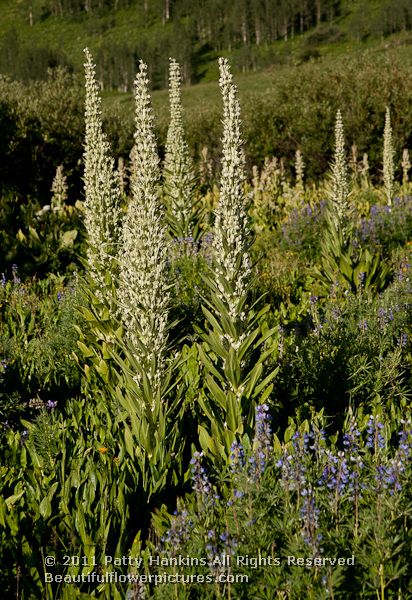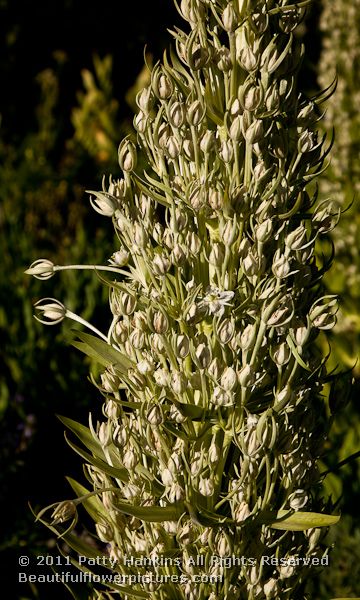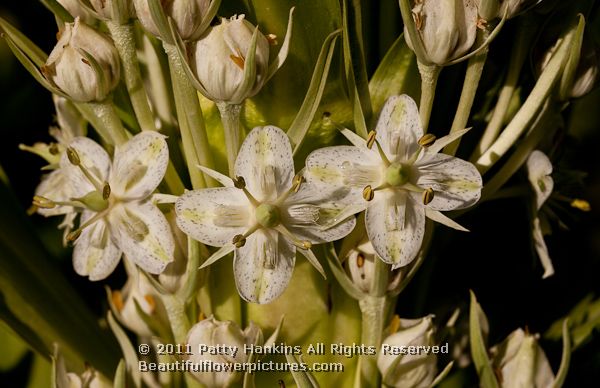Last summer while I was photographing wildflowers in Colorado, I kept seeing groups of really tall plants. Finally on my last day of the trip, I was able to get close enough to some to get a good look at them, and photograph them. Now that I’ve figuredout what they are, I wish I’d spent more time with them.
The plants are Frasera speciosa – commonly known as Monument plants, Elkweed or Green Gentian. A member of the Gentianaceae family, it can grow to 8 feet tall! The ones I photographed were probably close to that size. I certainly couldn’t see the tops of them without backing up and looking up. Long thought to be a biennial, research has shown that the Monument plants have a much more unusual life cycle. They are monocarpic plants having a lifespan of up to 80 years – and flowering only once during their lifetime. After they flower, the plants die. Another well known monocarpic plant is the century plant.
Scientists suspect that environmental factors can cause a mass bloom like was seen in 2010 in Colorado. Research by Dr. David Inouye of the Rocky Mountain Biological Laboratory indicates that 4 years after a wet July & August, the monument plants form the flowering stalks.
Monument plants are native to much of the western United States. They tend to grow in open mountain meadows, which is where I found them. They can grow to 8 feet tall with pale green lance shaped leaves of up to 18″. The flowers have either four or five sepals, are greenish white with purple glands and stiff hairs. The ones I photographed had four sepals and I didn’t see any of the purple glands. In some photos I’ve seen of the plants, the purple is very distinctive.
Apparently I was very lucky to have seen this many monument plants blooming in Colorado last summer. I wish I’d been able to identify them earlier in the trip and had taken more photographs of them. Oh well, I can always hope to see more of them on future wildflower photography trips.
Some online sites with more information about Frasera Speciosa include
Southwest Colorado Wildflowers (I just found this site while researching the Monument Plants – it has lots of wonderful information!)
The Burke Museum of Natural History and Culture



